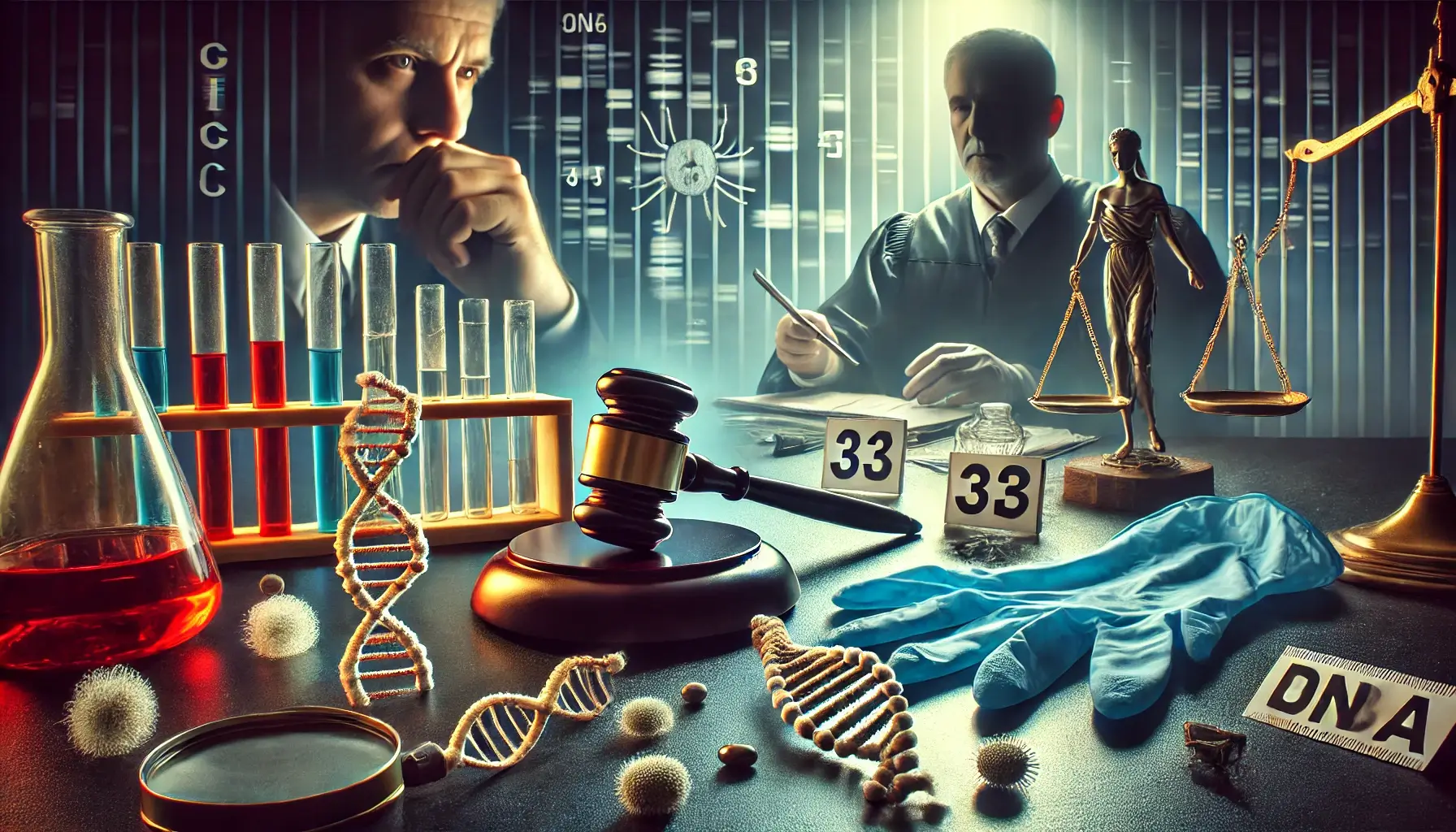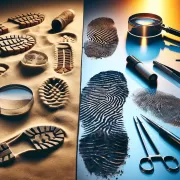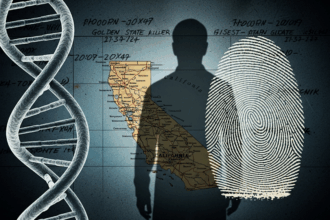Introduction
Forensic misconduct has become a critical issue in the criminal justice system, casting a shadow over numerous high-profile cases and leading to wrongful convictions. The mishandling of forensic evidence Evidence is any form of proof, such as objects, materials, or scientific findings, presented to establish or disprove a fact in a legal proceeding. It is used to reconstruct events and link or exclude individuals Read Full Definition, whether due to incompetence, negligence, or deliberate tampering, has had a profound impact on the lives of innocent individuals and has eroded public trust in the legal process. This troubling phenomenon has sparked debates about the reliability of forensic techniques and the need for stricter oversight in forensic laboratories.
Evidence is any form of proof, such as objects, materials, or scientific findings, presented to establish or disprove a fact in a legal proceeding. It is used to reconstruct events and link or exclude individuals Read Full Definition, whether due to incompetence, negligence, or deliberate tampering, has had a profound impact on the lives of innocent individuals and has eroded public trust in the legal process. This troubling phenomenon has sparked debates about the reliability of forensic techniques and the need for stricter oversight in forensic laboratories.
- Introduction
- The Impact of Forensic Misconduct
- The Amanda Knox Case: DNA Contamination and Mishandling
- The OJ Simpson Trial: Blood Evidence Tampering
- The Central Park Five: False Confessions and Flawed Forensics
- The Brandon Mayfield Case: Fingerprint Misidentification
- The Cameron Todd Willingham Case: Faulty Arson Science
- The Duke Lacrosse Case: DNA Evidence Suppression
- The West Memphis Three: Unreliable Forensic Evidence
- Conclusion: Lessons for the Criminal Justice System
The Impact of Forensic Misconduct
Over the years, several infamous cases have brought to light the devastating consequences of forensic misconduct. These cases have resulted in exonerations and played a crucial role in shaping legal precedents. These instances have exposed significant weaknesses in forensic practices, from DNA DNA, or Deoxyribonucleic Acid, is the genetic material found in cells, composed of a double helix structure. It serves as the genetic blueprint for all living organisms. Read Full Definition contaminationContamination - The unwanted transfer of material from another source to a piece of physical evidence. The inadvertent touching of a weapon, thereby adding fingerprints to it is an example of evidence contamination. Read Full Definition and blood evidence tampering to false confessions and flawed arson"Arson" is a criminal act involving intentionally and unlawfully setting fire to buildings, structures, or other property types. It is a serious offense and is considered a crime in most legal jurisdictions. Here are key Read Full Definition science. Organizations like the Innocence Project have been at the forefront of efforts to overturn wrongful convictions and push for reforms in the handling and interpreting forensic evidence.
DNA, or Deoxyribonucleic Acid, is the genetic material found in cells, composed of a double helix structure. It serves as the genetic blueprint for all living organisms. Read Full Definition contaminationContamination - The unwanted transfer of material from another source to a piece of physical evidence. The inadvertent touching of a weapon, thereby adding fingerprints to it is an example of evidence contamination. Read Full Definition and blood evidence tampering to false confessions and flawed arson"Arson" is a criminal act involving intentionally and unlawfully setting fire to buildings, structures, or other property types. It is a serious offense and is considered a crime in most legal jurisdictions. Here are key Read Full Definition science. Organizations like the Innocence Project have been at the forefront of efforts to overturn wrongful convictions and push for reforms in the handling and interpreting forensic evidence.
The Amanda Knox Case: DNA Contamination and Mishandling
The Amanda Knox case stands as a prime example of forensic misconduct and its devastating consequences. The investigation into the murder of Meredith Kercher in Perugia, Italy, was marred by a series of critical errors in evidence collection, handling, and analysis. These mistakes ultimately led to the wrongful conviction of Amanda Knox and Raffaele Sollecito, highlighting the importance of proper forensic procedures in criminal investigations.
From the outset, the crime scene was compromised. Police officers entered Kercher’s room without proper protective clothing, potentially contaminating crucial evidence. Video footage later revealed that items at the scene had been moved, creating new bloodstains and further compromising the integrity of the evidence. This mishandling of the crime scene made it difficult to accurately reconstruct the events surrounding the murder.
One of the most contentious pieces of evidence was a knife recovered from Sollecito’s kitchen, which prosecutors claimed was the murder weapon. However, forensic analysis of the knife was riddled with problems. The laboratory conducting the tests was not certified to perform the advanced DNA analysis techniques used in the case. Initially, the knife tested negative for blood, but investigators claimed it had been bleached. This assertion was later disproven when the substance on the knife was identified as potato starch.
The bra clasp belonging to the victim became another focal point of the investigation. It was collected weeks after the initial crime scene search and had been handled by several police investigators before being properly bagged as evidence. This delay and mishandling raised serious concerns about potential contamination.
Impact on the Trial
The mishandling of forensic evidence had a profound impact on the trial. Prosecutors relied heavily on DNA evidence to build their case against Knox and Sollecito. However, the reliability of this evidence was called into question due to the numerous procedural errors and potential contamination.
The prosecution’s case was further weakened by the lack of Knox’s DNA or fingerprintsFingerprint, impression made by the papillary ridges on the ends of the fingers and thumbs. Fingerprints afford an infallible means of personal identification, because the ridge arrangement on every finger of every human being is Read Full Definition in Kercher’s bedroom, where the crime occurred. The only evidence linking Sollecito to the scene was a trace amount of his DNA on the bra clasp, which could have been transferred from other areas of the cottage or through contamination during evidence collection.
Another crucial error was the failure to take Kercher’s body temperature when she was found, making it impossible to accurately determine the time of death. This oversight potentially eliminated a key piece of evidence that could have supported Knox and Sollecito’s alibis.
Lessons Learned
The Amanda Knox case serves as a stark reminder of the importance of proper forensic procedures and the potential consequences of forensic misconduct. It highlights several key lessons for the criminal justice system:
- Proper crime scene management is crucial. Investigators must follow strict protocols to prevent contamination and preserve the integrity of evidence.
- DNA evidence, while powerful, is not infallible. The sensitivityIn the context of laboratory equipment or analytical techniques, the term "sensitive" describes the capability of a machine or method to detect even very small amounts or concentrations of a substance. Sensitivity is a quantitative Read Full Definition of DNA analysis techniques means that even tiny amounts of contamination can lead to false results.
- The interpretation of DNA evidence requires careful consideration of potential sources of contamination and transfer.
- Independent review of forensic evidence is essential, especially in high-profile cases. In the Knox case, a panel of experts later criticized the handling and analysis of key pieces of evidence.
- Overreliance on forensic evidence can lead to tunnel vision, causing investigators to overlook other important aspects of a case.
The Amanda Knox case underscores the need for ongoing training and education in forensic science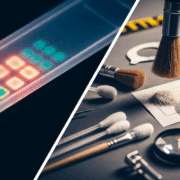 Discover the fascinating field of Forensic Science, the application of scientific principles to legal matters. This post delves into its many disciplines, from DNA analysis to crime scene investigation, its importance in the justice system, Read Full Definition, as well as the importance of maintaining high standards in evidence collection and analysis. It also highlights the vital role of organizations like the Innocence Project in challenging wrongful convictions and pushing for reforms in forensic practices.
Discover the fascinating field of Forensic Science, the application of scientific principles to legal matters. This post delves into its many disciplines, from DNA analysis to crime scene investigation, its importance in the justice system, Read Full Definition, as well as the importance of maintaining high standards in evidence collection and analysis. It also highlights the vital role of organizations like the Innocence Project in challenging wrongful convictions and pushing for reforms in forensic practices.
The OJ Simpson Trial: Blood Evidence Tampering
The OJ Simpson trial stands as one of the most infamous cases of forensic misconduct, highlighting the critical importance of proper evidence handling and the potential for wrongful convictions. The case, which captivated the nation, brought to light significant issues in the collection and preservation of forensic evidence, particularly blood evidence, which played a crucial role in the trial’s outcome.
Key Issues with Evidence Collection
From the outset, the investigation was plagued by a series of critical errors in evidence collection and handling. These mistakes ultimately undermined the prosecution’s case and raised doubts about the reliability of the forensic evidence presented.
One of the most glaring issues was the mishandling of blood evidence. Investigators made several crucial errors, including:
- Packaging blood swatches in plastic bags instead of paper containers, which can lead to DNA degradation.
- Collecting blood evidence weeks after the crimes were committed, raising questions about its integrity.
- Carrying a vial of Simpson’s blood for hours before properly storing it, creating opportunities for contamination or tampering.
- Spilling Simpson’s blood in the laboratory where other samples were being tested, potentially compromising the results.
These errors in evidence collection and preservation gave the defense team ample ammunition to challenge the reliability of the DNA evidence. They argued that the mishandling of evidence could have resulted in contamination or even deliberate tampering, casting doubt on the prosecution’s entire case.
The defense team also raised concerns about the security of the LAPD’s storage and laboratory facilities. They pointed out that Simpson’s Bronco, a key piece of evidence, had been accessed at least twice by unauthorized personnel while in the impound yard. Such breaches in security further eroded the credibility of the forensic evidence presented by the prosecution.
Another significant issue was the lack of proper documentation regarding the collection of Simpson’s reference blood sample. The absence of clear records about how much blood was taken allowed the defense to speculate about the possibility of “missing” blood being used to plant evidence at the crime scene.
Long-Term Legal Implications
The OJ Simpson trial had far-reaching consequences for the legal system and forensic science practices. It exposed significant weaknesses in evidence collection and handling procedures, leading to calls for reform and increased scrutiny of forensic practices.
One of the most significant outcomes was a heightened awareness of the potential for forensic misconduct and its impact on wrongful convictions. The case underscored the need for more rigorous standards in evidence collection, preservation, and analysis, particularly in high-profile cases.
The trial also brought the importance of DNA evidence to the forefront of public consciousness. While DNA analysis was already being used in criminal investigations, the Simpson case highlighted both its power and its limitations. It demonstrated that even seemingly conclusive scientific evidence could be called into question if not handled properly.
In the years following the trial, many jurisdictions implemented stricter protocols for evidence handling and increased training for forensic technicians. The case also led to greater scrutiny of police practices and the potential for biasThe difference between the expectation of the test results and an accepted reference value. Read Full Definition or misconduct in investigations.
The Simpson trial had a lasting impact on jury selection and trial strategies. Defense attorneys began to focus more on challenging the reliability of forensic evidence and highlighting potential misconduct in evidence collection and analysis.
Ultimately, the OJ Simpson trial served as a wake-up call for the criminal justice system, emphasizing the critical importance of proper forensic practices in ensuring fair trials and preventing wrongful convictions. It continues to be a cautionary tale about the potential consequences of forensic misconduct and the need for constant vigilance in the pursuit of justice.
The Central Park Five: False Confessions and Flawed Forensics
The Central Park Five case stands as a stark example of forensic misconduct and its devastating consequences on innocent lives. In 1989, five young men – Yusef Salaam, Kevin Richardson, Antron McCray, Raymond Santana, and Korey Wise – were wrongfully convicted of assaulting and raping a jogger in New York’s Central Park. Their convictions were based largely on coerced false confessions and flawed forensic evidence, highlighting the urgent need for reforms in the criminal justice system.
Forensic Errors in the Case
The investigation and prosecution of the Central Park Five were marred by significant forensic misconduct. One of the most glaring issues was the mishandling and misinterpretation of DNA evidence. Even though none of the suspects’ DNA matched the samples collected from the crime scene, the police reported the results as “inconclusive.” This crucial information was not properly communicated to the jury, leading to a severe miscarriage of justice.
Another significant error involved hair analysis. A forensic analystA designated person who examines and analyzes seized drugs or related materials, or directs such examinations to be done; independently has access to unsealed evidence in order to remove samples from the evidentiary material for Read Full Definition testified that a hair found on the victim was “similar” to Richardson’s hair “to a reasonable degree of scientific certainty.” However, this type of analysis has since been discredited due to its lack of scientific basis and high potential for error. Years later, more advanced DNA testing revealed that the hairs in Richardson’s clothes did not match the victim, further undermining the original conviction.
The case also highlighted the dangers of relying too heavily on confession evidence, especially when obtained through coercive interrogation techniques. The five teenagers were subjected to hours of aggressive questioning without the presence of lawyers or parents. Under extreme duress, they gave false confessions that contained inconsistencies and factual errors. These confessions were later retracted, but they played a crucial role in securing convictions despite the lack of physical evidence linking the boys to the crime.
Exoneration and Aftermath
The exoneration of the Central Park Five came in 2002, when Matias Reyes, a convicted murderer and serial rapist, confessed to the crime. DNA testing confirmed Reyes’ involvement and excluded the five men. This revelation led to reinvestigating the case, resulting in vacating the convictions for all five men.
The exoneration had far-reaching consequences, not only for the wrongfully convicted men but also for the criminal justice system as a whole. It exposed the flaws in forensic practices and interrogation techniques, leading to calls for reform. The case became a rallying point for organizations like the Innocence Project, which works to overturn wrongful convictions through DNA testing and advocates for changes in the criminal justice system.
After their dismissal, the five men filed a civil lawsuit against New York City, which was settled in 2014 for $41 million. This substantial settlement could not fully compensate for the years of freedom lost and the trauma endured. The case continues to serve as a powerful reminder of the importance of proper forensic practices and the need for safeguards against wrongful convictions.
The Central Park Five case has impacted public awareness of forensic misconduct and wrongful convictions. It has sparked important discussions about the reliability of confession evidence, the need for recorded interrogations, and the importance of proper forensic analysis. As a result, many jurisdictions have implemented reforms to prevent similar miscarriages of justice in the future.
The Brandon Mayfield Case: Fingerprint Misidentification
The Brandon Mayfield case stands as a stark example of forensic misconduct and its devastating consequences. In 2004, Mayfield, an American lawyer from Oregon, was wrongfully arrested and detained by the FBI in connection with the Madrid train bombings. This case highlighted the flaws in latent printLatent print - A fingerprint, palm print or footprint that is not readily visible under normal lighting. Read Full Definition analysis and led to significant reforms in fingerprint examination procedures.
Flaws in Latent Print Analysis
The misidentification of Mayfield’s fingerprint exposed serious weaknesses in the FBI’s fingerprint analysis methods. Despite Spanish authorities contesting the FBI’s findings, the bureau initially maintained that Mayfield’s prints were a “100 percent match” to those found on a bag containing detonators near the bombing site. This overconfidence in their analysis led to a series of errors:
- Reliance on a substandard digital image of the print, rather than waiting for the original.
- Failure to adhere to the bureau’s own rules for identifying latent fingerprints.
- Dismissal of Spanish authorities’ concerns about the identification.
The FBI’s internal review later acknowledged that while Mayfield’s prints were among the best 15 matches found by their computer system, the examiners failed to consider the possibility of error. This case revealed the subjective nature of fingerprint analysis, which, like many pattern-based forensic disciplines, involves more interpretation than other forensic methods such as chemical analysis.
Reforms in Fingerprint Examination
The Mayfield case triggered a series of reforms within the FBI and the broader forensic science community:
- Suspension of work and a two-year review of casework in the FBI’s latent print unit.
- Establishment of an international review committee to evaluate the misidentification and make recommendations.
- Implementation of “black box” testing to assess both examiners and methods simultaneously.
- Increased emphasis on the limitations of fingerprint analysis in training and courtroom testimony.
- Development of more rigorous standards for declaring fingerprint matches.
These reforms aimed to reduce the risk of similar errors in the future and improve the reliability of fingerprint evidence. The case also highlighted the need for ongoing research into the scientific foundations of forensic techniques and the importance of independent verification in high-stakes cases.
The Brandon Mayfield case powerfully reminds us of the potential consequences of forensic misconduct and the critical importance of maintaining high standards in evidence analysis. It underscores the need for forensic scientists to acknowledge the limitations of their methods and approach their work with humility and skepticism. As a result of this case and others like it, there is now greater awareness of the potential for error in forensic science, leading to more cautious interpretations of evidence and a renewed focus on scientific rigor in criminal investigations.
The Cameron Todd Willingham Case: Faulty Arson Science
The Cameron Todd Willingham case stands as a stark example of how outdated forensic techniques and flawed arson science can lead to wrongful convictions and potentially, the execution of an innocent person. Willingham was convicted and executed in 2004 for allegedly setting a fire that killed his three young daughters in their Corsicana, Texas home in 1991. However, subsequent reviews of the case have raised serious questions about the validity of the arson evidence used to convict him.
Outdated Fire Investigation Techniques
At the time of Willingham’s trial, fire investigators relied on a set of indicators that were believed to be clear signs of arson. These included:
- Low-burning, irregular fire patterns
- Collapsed furniture springs
- V-shaped marks on walls
- Assumptions about the behavior of glass windows during a blaze
However, these methods have since been discredited by modern fire science. Experts now recognize that many of these “indicators” can occur naturally in accidental fires, especially when a room reaches a state known as flashover.
The investigation of the Willingham fire used these outdated techniques, leading to a flawed conclusion of arson. Gerald Hurst, an internationally recognized arson expert who reviewed the case shortly before Willingham’s execution, stated, “One might well wonder how anyone could make so many critical errors in interpreting the evidence.”
The Texas Forensic Science Commission (TFSC) later concluded that the scientific methods used in the Willingham investigation were discredited. This finding has had far-reaching consequences for the field of arson investigation and has raised troubling questions about the reliability of forensic evidence in criminal cases.
Impact on Arson Investigations
The Willingham case has profoundly impacted arson investigations across the United States. It has exposed the need for ongoing training and education in fire science and has led to significant reforms in how arson cases are handled. Some of the key changes include:
- Adoption of the scientific method in fire investigations
- Implementation of national standards for arson investigators
- Establishment of advanced training programs
- Development of new certificationCertification is a process through which a scientist can demonstrate their knowledge and competence in a particular field or in performing specific assays. It involves meeting established standards and requirements set by a certifying body. Read Full Definition criteria for expert witnesses
- Creation of rules to prevent the use of outdated science in courtrooms
The case has also prompted a review of past arson convictions. The Innocence Project of Texas has sent questionnaires to more than 1,000 Texas inmates jailed on arson-related charges, aiming to identify cases where faulty science may have led to wrongful convictions.
The TFSC has recommended a review of previous arson cases and has issued 17 recommendations for improving arson investigations in Texas. These include adopting national standards, establishing a timeline for advanced training, and improving the quality of testimony and analysis in arson cases.
The Willingham case serves as a powerful reminder of the potential consequences of forensic misconduct and the critical importance of maintaining high standards in evidence analysis. It underscores the need for forensic scientists to acknowledge the limitations of their methods and to approach their work with humility and skepticism. As a result of this case and others like it, there is now greater awareness of the potential for error in forensic science, leading to more cautious interpretations of evidence and a renewed focus on scientific rigor in criminal investigations.
The Duke Lacrosse Case: DNA Evidence Suppression
The Duke lacrosse case stands as a stark example of forensic misconduct and its devastating consequences on innocent lives. In 2006, three members of the Duke University men’s lacrosse team were falsely accused of rape, leading to a highly publicized legal battle that exposed serious flaws in the handling of forensic evidence and prosecutorial ethics.
Prosecutorial Misconduct
At the heart of this case was the egregious misconduct of Durham County District Attorney Mike Nifong. His actions during the investigation and prosecution of the case revealed a disturbing pattern of unethical behavior and deliberate suppression of exculpatory evidence.
One of the most shocking aspects of Nifong’s misconduct was his collaboration with Brian Meehan, the director of DNA Security Inc. (DSI), a private laboratory engaged to perform additional DNA testing. Together, they conspired to withhold crucial DNA evidence that could have exonerated the accused players. The DNA results revealed the presence of genetic material from multiple unidentified males on the accuser’s body and clothing, none of which matched the Duke lacrosse players. However, this information was deliberately omitted from the lab’s report.
Nifong’s actions went beyond mere oversight. He falsely represented to the court and the public that DNA had been found only from a single male source, the accuser’s boyfriend. This misrepresentation was a clear violation of ethical standards and legal obligations, as prosecutors are required to disclose all potentially exculpatory evidence to the defense.
The suppression of this DNA evidence had a profound impact on the case. It allowed Nifong to press ahead with what many considered a weak case, lacking any physical evidence linking the accused to the alleged Alleged is a term used in legal contexts to describe an accusation or claim that has been made against an individual but has not yet been proven or confirmed. Read Full Definition crime. This decision not only prolonged the ordeal for the falsely accused players but also eroded public trust in the justice system.
Alleged is a term used in legal contexts to describe an accusation or claim that has been made against an individual but has not yet been proven or confirmed. Read Full Definition crime. This decision not only prolonged the ordeal for the falsely accused players but also eroded public trust in the justice system.
Reforms in Evidence Disclosure
The Duke lacrosse case served as a catalyst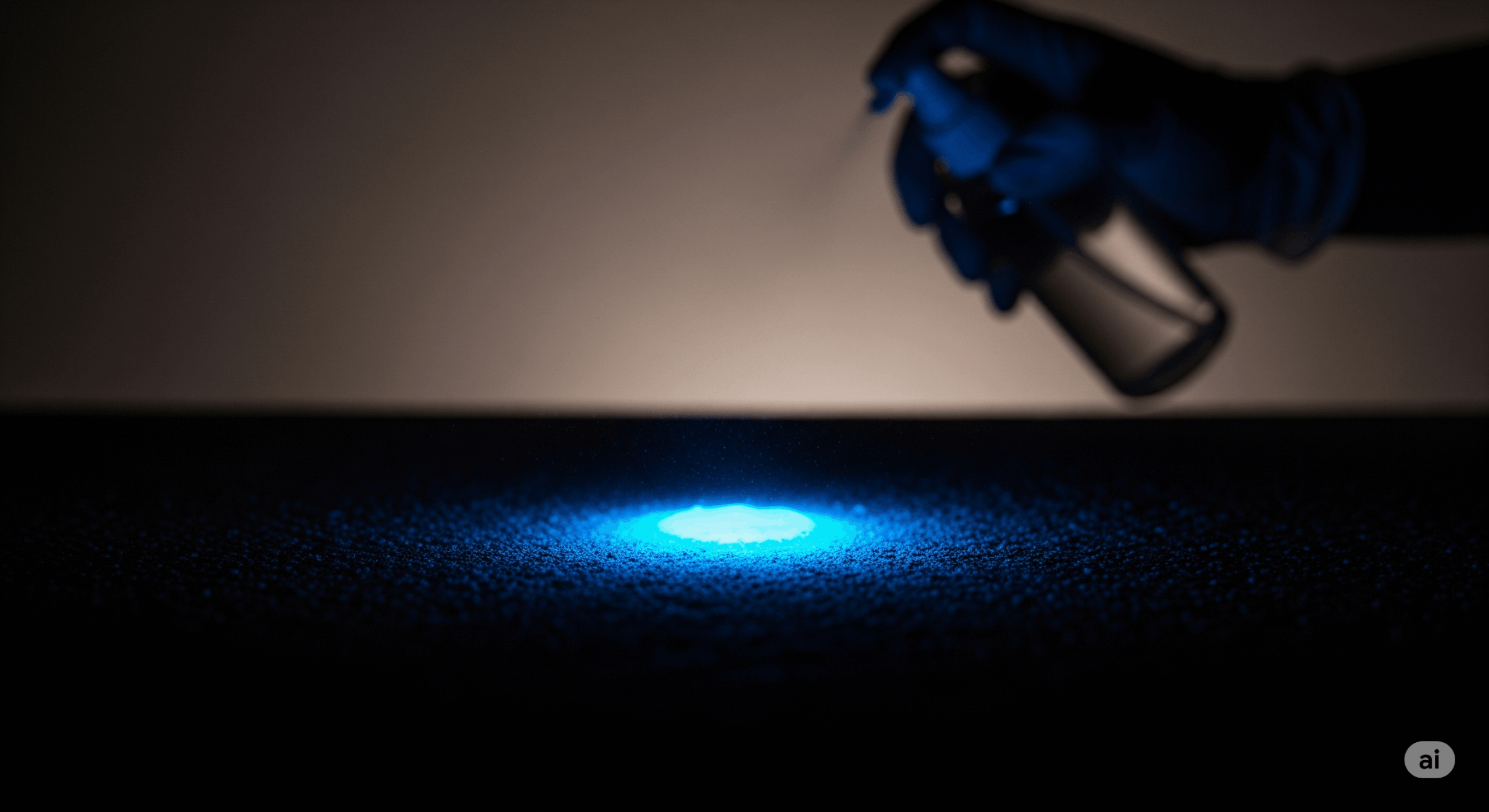 A catalyst is a substance that increases the speed of a chemical reaction without being consumed in the process. In forensics, it's the principle behind tests like the luminol reaction, where iron in blood catalyzes Read Full Definition for significant reforms in evidence disclosure practices, particularly in North Carolina. In the wake of this scandal, the state adopted an open file policy, requiring prosecutors to share all evidence with the defense. This approach to discovery has gained momentum across the country, reflecting a growing recognition of the importance of transparency in criminal proceedings.
A catalyst is a substance that increases the speed of a chemical reaction without being consumed in the process. In forensics, it's the principle behind tests like the luminol reaction, where iron in blood catalyzes Read Full Definition for significant reforms in evidence disclosure practices, particularly in North Carolina. In the wake of this scandal, the state adopted an open file policy, requiring prosecutors to share all evidence with the defense. This approach to discovery has gained momentum across the country, reflecting a growing recognition of the importance of transparency in criminal proceedings.
The case also prompted a broader discussion about the role of prosecutors in ensuring justice. In response to similar high-profile cases of prosecutorial misconduct, the U.S. Department of Justice issued new guidance for prosecutors regarding criminal discovery. This guidance encouraged prosecutors to provide broader and more comprehensive discovery than required by law, emphasizing that the government’s primary duty is to do justice, not merely to secure convictions.
These reforms aim to prevent future instances of wrongful convictions and to restore faith in the criminal justice system. By embracing an open file policy, prosecutors can ensure that all relevant evidence is available to the defense, reducing the risk of miscarriages of justice due to hidden or suppressed evidence.
The Duke lacrosse case stands as a powerful reminder of the critical importance of ethical conduct in forensic science and prosecution. It underscores the need for rigorous oversight, transparency, and accountability in the handling of forensic evidence. As a result of this case and others like it, there is now greater awareness of the potential for misconduct in the criminal justice system, leading to more cautious approaches to evidence interpretation and a renewed focus on fairness and justice.
The West Memphis Three: Unreliable Forensic Evidence
The case of the West Memphis Three stands as a stark example of forensic misconduct and its devastating impact on innocent lives. In 1994, Damien Echols, Jessie Misskelley, and Jason Baldwin were convicted for the murders of three young boys in West Memphis, Arkansas. Their convictions were based on flawed forensic evidence and coerced confessions, leading to a miscarriage of justice that would take nearly two decades to rectify.
Bite Mark Evidence Controversy
One of the most contentious aspects of the case was the alleged bite mark evidence. Years after the trial, forensic experts examining autopsyAn autopsy, also known as a post-mortem examination or necropsy (when performed on animals), is a thorough and systematic medical procedure that involves the examination of a deceased person's body, typically to determine or confirm Read Full Definition photos claimed to have identified a human bite mark on one of the victims. This revelation raised serious questions about the thoroughness of the initial investigation and the reliability of forensic evidence presented at trial.
The defense argued that they were not given funding to have a forensic odontologist examine the alleged bite mark during the original trial. They claimed that the police had knowledge of this evidence but did not bring it forward because it would have exonerated the accused. This suppression of potentially exculpatory evidence is a clear example of forensic misconduct that contributed to wrongful convictions.
Five years after the convictions, a team of experts, including an odontologist, a pathologist, and a certified medical examiner, reviewed the autopsy photos. They testified during an appeal that dental impressions obtained from the three defendants did not match the alleged bite mark. However, despite this new evidence, all three men remained behind bars.
Impact on Forensic Odontology
The West Memphis Three case has had a significant impact on the field of forensic odontology and its role in criminal investigations. It highlighted the need for more rigorous standards and practices in bite mark analysis, a discipline that has come under increasing scrutiny in recent years.
The case exposed the limitations of bite mark evidence and its potential to lead to wrongful convictions. It became clear that the methods and significance of forensic odontology needed to be more fully explained to the court and the general public, who make up juries. The controversy surrounding the bite mark evidence in this case has contributed to a broader debate about the reliability of forensic science in criminal trials.
As a result of cases like the West Memphis Three, there has been a push for more careful procedures and stronger scientific validationValidation, often referred to as method validation, is a crucial process in the laboratory when introducing a new machine, technology, or analytical technique. It involves a series of systematic steps and assessments to ensure that Read Full Definition in forensic odontology. This has led to a reevaluation of past convictions based on bite mark evidence and a more cautious approach to its use in current and future cases.
The West Memphis Three case serves as a powerful reminder of the potential consequences of relying on unvalidated forensic techniques. It underscores the importance of ongoing research, rigorous peer review, and the willingness to challenge established practices in the pursuit of justice. The Innocence Project and similar organizations have used this case as an example in their efforts to reform forensic science practices and prevent future wrongful convictions based on flawed evidence.
Conclusion: Lessons for the Criminal Justice System
The cases we’ve explored shed light on the far-reaching consequences of forensic misconduct in the criminal justice system. These high-profile incidents have had a significant impact on legal precedents, prompting a reevaluation of forensic practices and the implementation of crucial reforms. The Amanda Knox case, OJ Simpson trial, and others have exposed weaknesses in evidence handling and analysis, leading to a greater emphasis on proper procedures and independent review.
Looking ahead, these cases serve as a stark reminder of the need for ongoing vigilance and improvement in forensic science. They highlight the importance of rigorous training, adherence to scientific principles, and transparency in the criminal justice process. As we continue to learn from past mistakes, the focus must remain on enhancing the reliability of forensic evidence to ensure fair trials and prevent wrongful convictions. This ongoing effort is crucial to maintain public trust in the legal system and uphold the principles of justice.



